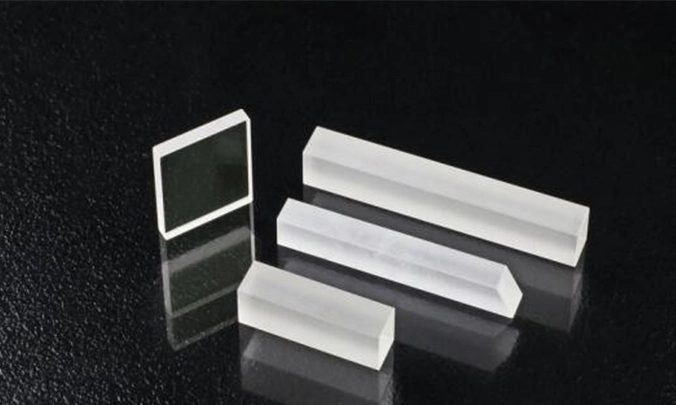Barium Borate (BBO) crystals are renowned for their birefringent properties, making them indispensable in various optical applications, including lasers and nonlinear optics. These crystals can manipulate the polarization state of light, a feature that is highly valued in advanced optical systems. BBO crystals exist in two distinct phases: Alpha-Barium Borate (α-BBO) and Beta-Barium Borate (β-BBO). Despite being derived from the same chemical compound, these two forms exhibit unique characteristics that make them suitable for different applications.
BBO crystals are primarily used to alter the polarization state of light, a property that is crucial in many optical systems. They are employed in applications ranging from laser technology to nonlinear optics. The ability of BBO crystals to change the polarization state of light makes them ideal for use in polarizers, depolarizers, and phase retarders. Additionally, their high damage threshold allows them to be used in high-power laser operations, such as Q-switching in lasers.
The most significant difference between α-BBO and β-BBO lies in their crystal structures. Alpha BBO has a monoclinic crystal system, characterized by one unique crystal axis that differs from the other two. This structure contributes to its high thermal stability and birefringence properties. In contrast, β-BBO belongs to the trigonal crystal system, which is defined by a threefold symmetry axis. This structural difference is crucial as it influences the thermal stability and optical properties of the crystals.

Thermal stability is another critical factor that differentiates α-BBO from β-BBO. α-BBO exhibits higher thermal stability compared to β-BBO. When β-BBO is heated to approximately 925 degrees Celsius, it undergoes a phase transition to α-BBO. This phase transition results in a reduction of its nonlinear optical properties, making α-BBO more suitable for applications requiring high thermal stability.
The optical properties of α-BBO and β-BBO are markedly different. α-BBO crystals do not exhibit nonlinear optical properties, which limits their applications to polarization optics. They are commonly used in polarizers, depolarizers, and phase retarders. Due to their high damage threshold, α-BBO crystals are also employed in high-power laser operations, such as Q-switching in lasers.
On the other hand, β-BBO crystals are highly valued for their nonlinear optical properties. They have a broader transparency range, extending from the ultraviolet (UV) to the far infrared (FIR), and a higher nonlinear optical coefficient. These properties make β-BBO the material of choice for various nonlinear optical applications, including second-harmonic generation (SHG), third-harmonic generation (THG), optical parametric oscillators (OPOs), and other nonlinear optical processes.

The hardness of BBO crystals is an important factor to consider, especially in applications involving high-power lasers. Both α-BBO and β-BBO exhibit similar hardness levels, typically around 5 on the Mohs scale. This level of hardness ensures that the crystals can withstand mechanical stress and maintain their structural integrity during high-power operations.
The conversion efficiency of BBO crystals is a critical parameter in nonlinear optical applications. β-BBO crystals are particularly noted for their high conversion efficiency, which is a measure of how effectively they can convert one wavelength of light into another. This high conversion efficiency makes β-BBO crystals ideal for applications such as frequency doubling (SHG) and tripling (THG). In contrast, α-BBO crystals do not exhibit significant nonlinear optical properties, and therefore, their conversion efficiency is not a relevant parameter.
In summary, both α-BBO and β-BBO crystals have unique strengths that make them suitable for different applications. β-BBO is the preferred choice for a wide range of nonlinear optical applications due to its expansive transparency range and higher nonlinear optical coefficient. It is highly effective in frequency conversion processes such as SHG, THG, and OPOs. Conversely, α-BBO is more suitable for applications requiring high thermal stability and high-power laser operations, thanks to its high damage threshold and birefringence properties. As the field of optics continues to evolve, both α-BBO and β-BBO crystals will remain essential in advancing optical technologies.
By understanding the distinct properties and applications of α-BBO and β-BBO, businesses and researchers can make informed decisions on which type of BBO crystal to use for their specific needs, thereby optimizing performance and efficiency in their optical systems.